Learn how to cook eggs with my easy, go-to methods. You’ll learn the easy ways to turn eggs into safe finger foods, how to store cooked eggs, and how to serve eggs for baby-led weaning. We’ll cover hard-cooked, scrambled, and fried eggs, plus a few different ways to do each on the stove top, in the oven, and in the Instant Pot to make your life easy!
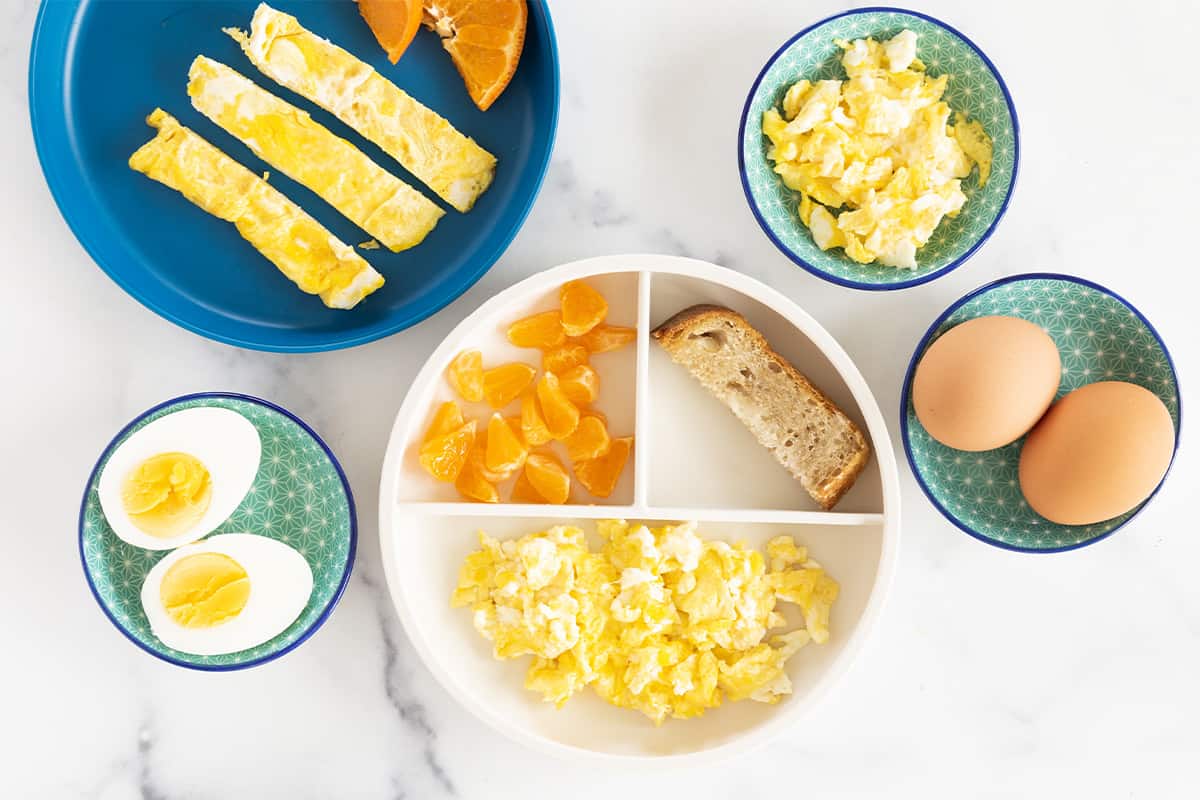
How to Cook Eggs
Learning a few ways to cook eggs for your kids can make a giant difference in whether they’ll eat them. Many kids have a preference for how they like to eat them, but sorting through the options can be tricky. I’m going to share my favorite ways to cook eggs for kids, starting with babies, then toddlers, and on up. Here’s a look at some of the most common ways to cook eggs:
- Hard-cooked on the stove top and in a steamer
- Hard-cooked in a pot on the stove top, in the Instant pot, or in the oven
- Scrambled on the stove top or in the microwave
- Omelet on the stove top
- Fried on the stove top or in the oven
- Baked into egg muffins
Table of Contents
- How to Cook Eggs
- Nutrition in Eggs
- How to Cook Eggs for Baby
- At what age can I serve scrambled eggs to my baby?
- Eggs as Finger Food
- How to Cook Scrambled Eggs in the Microwave
- How to Cook Scrambled Eggs on the Stove Top
- How to Cook Eggs for Toddlers
- How to Make Hard-Cooked Eggs
- What's the best way to hard-cook fresh eggs so they are easy to peel?
- At what age can I serve hard-cooked eggs to my toddler?
- How to Make Egg Muffins
- How to Make the Best Fried Eggs
- What should I serve eggs with?
- How to Store Cooked Eggs
- How to Cook Eggs: 10 Simple, Kid-Friendly Ways Recipe
Your toddler won’t eat? Help is here!
Sign up for our email updates to get tips and ideas sent to your inbox.
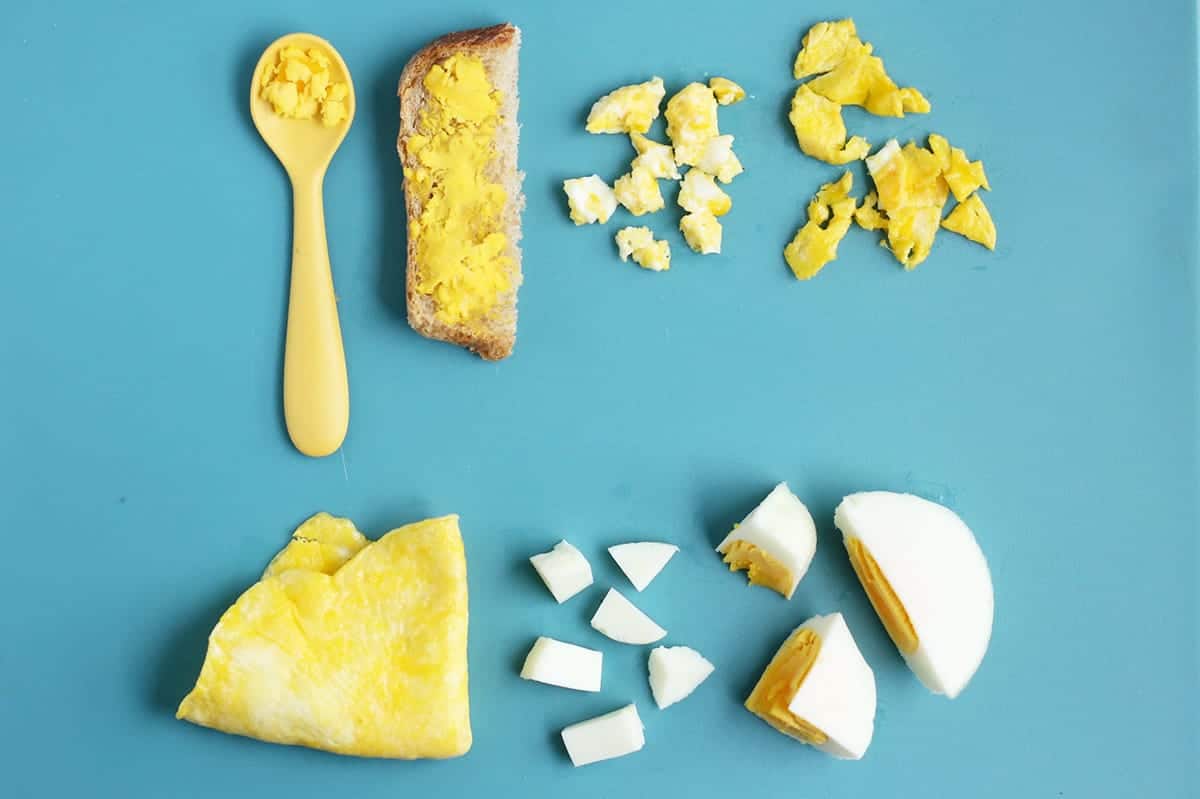
Nutrition in Eggs
Eggs are an awesome food for kids since they contain fat in the yolk that they need for proper brain development, and the whites contain protein. They’re a budget-friendly source of vegetarian protein and cook up so quickly that they’re a super last-minute meal. Provided there are no allergies in the house, I highly recommend making eggs a staple in your house each week—especially when you find them on sale.
We try to find local eggs, especially during farmer’s market season, as they are often less expensive.
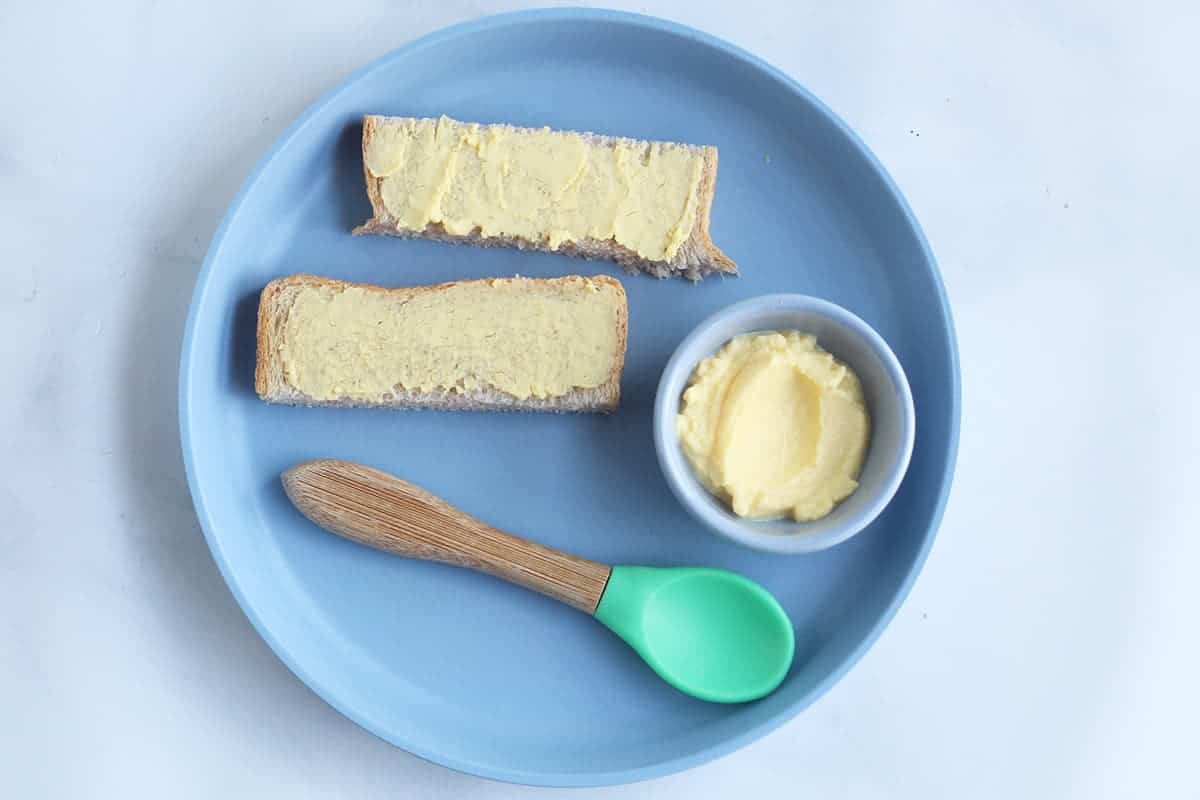
How to Cook Eggs for Baby
After you check in with your pediatrician about introducing potentially allergenic foods, eggs are a great early food to feed a baby. It can be hard to figure out how to serve them, though, so here are my favorite ways to serve eggs to babies.
Hard-Cooked Egg Yolk Mashed on a Spoon
If you’re doing BLW, this is a great way to let baby self-feed eggs. Simply mash the cooked and cooled yolk onto a little spoon and hand the spoon over. Baby can get the spoon into her own mouth and then you can reload it for her!
Hard-Cooked Egg Yolk Mashed on a Toast Stick
This is also a great BLW option. Spread mashed yolk on a toast stick (a piece of lightly toasted bread cut into roughly the size of two fingers, which is easy for the baby to hold to suck and gnaw on) and hand it over to baby. The piece should be easy for the baby to suck the egg off, but the toast should hold together and not be a choking hazard.

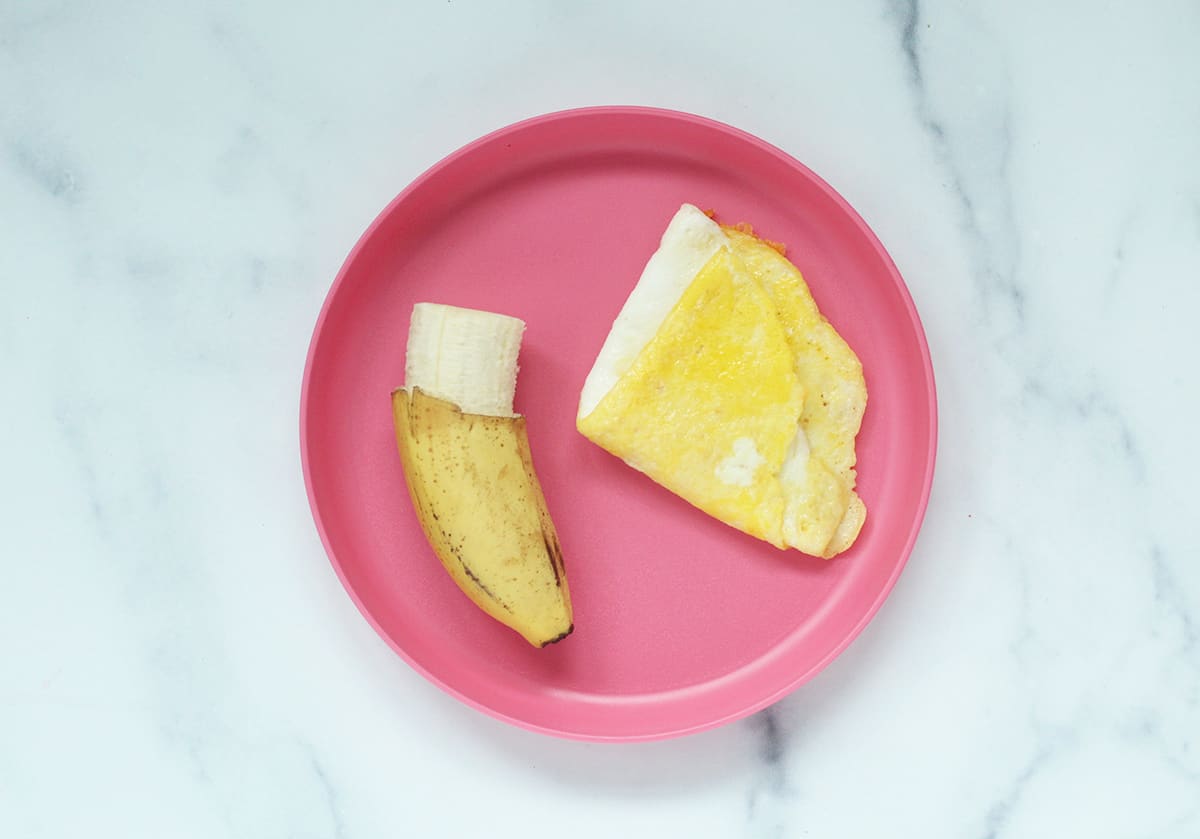
Baby-LEd Weaning Omelet
Cook a simple omelet and fold it over for baby to pick up, or slice it into finger-size pieces, the classic BLW shape, for baby to self-feed.
At what age can I serve scrambled eggs to my baby?
Scrambled eggs are a great finger food for babies 8-9 months and up, or whenever baby develops their pincer grasp, which is the ability to pick up small pieces of food with their fingers. This stage can vary depending on the child and how they are progressing with solid foods.
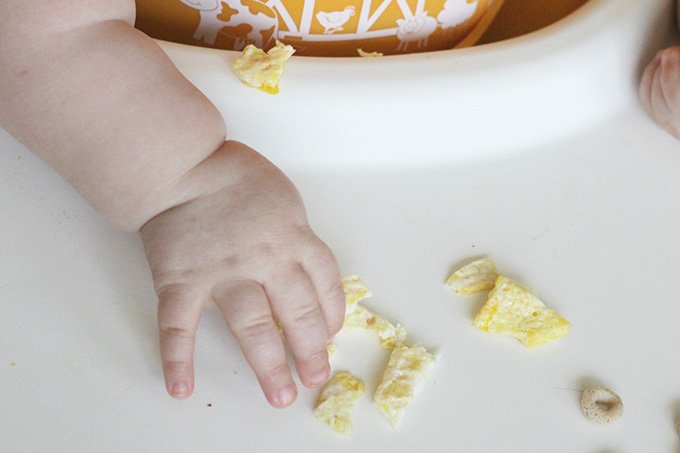
Eggs as Finger Food
Eggs are a wonderful finger food for babies since they fit the description of safe early finger foods: Easy to pick up with little hands and easy to squish between fingers. They are also nutrient-dense, which is a great quality in a baby food.
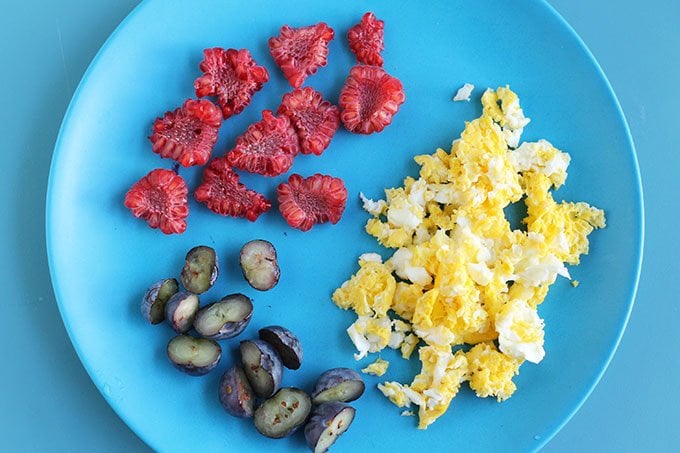
How to Cook Scrambled Eggs in the Microwave
Another awesome way to cook eggs for babies is to make them into scrambled eggs in the microwave. This may sound odd, but it creates the softest eggs AND it’s so super quick! To do this:
Break an egg into a heat-safe bowl. Beat with a fork. Heat in 15-second increments, stirring with the fork between, until cooked through. Cut up (I use kitchen shears) the egg into tiny pieces. Let cool before serving as a finger food to baby.

How to Cook Scrambled Eggs on the Stove Top
Of course, you can make scrambled eggs in a pan on the stove top. I prefer using a nonstick or cast-iron skillet and using this method:
Warm the skillet over medium heat. Add 1 teaspoon butter. When it melts, spread it around the pan with a spatula. Crack the egg into the pan. Let set for about 1 minute, then break up with a spatula. Continue to move the egg around bit by bit and then flip it over, to cook it entirely through. (Breaking it up this way helps it to become softer.) When it’s fully cooked through and there’s no runny egg white or yolk left, break up into small pieces and serve.
You can also try my Spinach Eggs.
How to Cook Eggs for Toddlers
When serving eggs for toddlers, or in the next phase of eating after babyhood, you can use any of the methods above, but you can also start to introduce firmer preparations including hard-cooked egg white and yolk. And omelets are fun!
If your child doesn’t like the eggs you serve, try them another way!
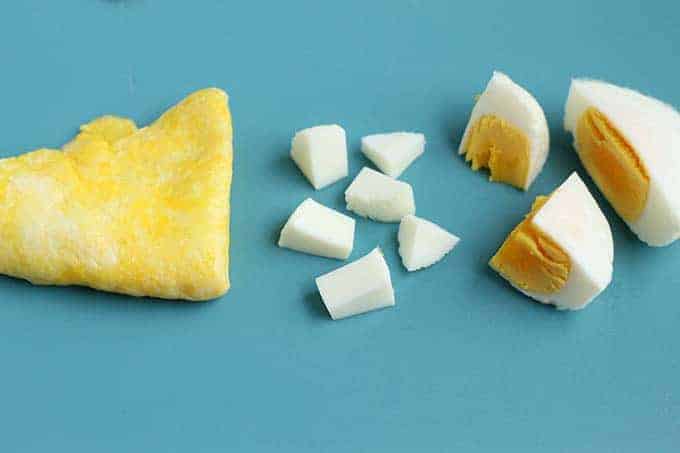
How to Make Hard-Cooked Eggs
Hard-cooking eggs is a great way to make a lot of eggs and store them in the fridge to eat throughout the week. Many toddlers prefer only the white or only the yolk, so don’t be alarmed if you can’t get your kiddo to eat the entire thing! Here are my favorite ways to make hard-cooked eggs.
- Hard-Cooked Eggs in the Oven: I find baking eggs to be a really easy method, though there will be a brown dot at the point where the egg was in contact with the pan … which is SO minor, but always detectable by my kids!
- Hard-Cooked Eggs in the Instant Pot: From what I hear, this makes the eggs super easy to peel and the people who use this method love it. (I have an Instant Pot but feel like it’s just easier to use a pot? Which maybe just makes me too lazy to get the thing out of my closet …)
- Hard-Cooked Eggs on the Stove Top: Admittedly, this classic method is still the one I use most often. Add your eggs to a pot and cover with 2 inches of water. Bring to a boil. Turn off the heat, put the cover on, and let sit for 12 minutes. Drain and fill the pot with cold water and ice. Let sit for about 10 minutes to cool.
- Steamed Hard-Cooked Eggs: People swear this method of cooking eggs makes them the easiest to peel! And it’s simple, which is nice.
What’s the best way to hard-cook fresh eggs so they are easy to peel?
Fresh eggs can be really hard to peel when hard-cooked, but I’ve found that doing them in the Instant Pot makes them much easier. And people say the same thing about steaming!
At what age can I serve hard-cooked eggs to my toddler?
I would wait until close to 18-20 months, depending on your child. The texture of the whites can be too chewy for a lot of kids, so see how your child handles it.
PS: It’s normal for kids to just like the white or yellow part of hard-cooked eggs. It’s also normal for kids to like one type of egg but not another!
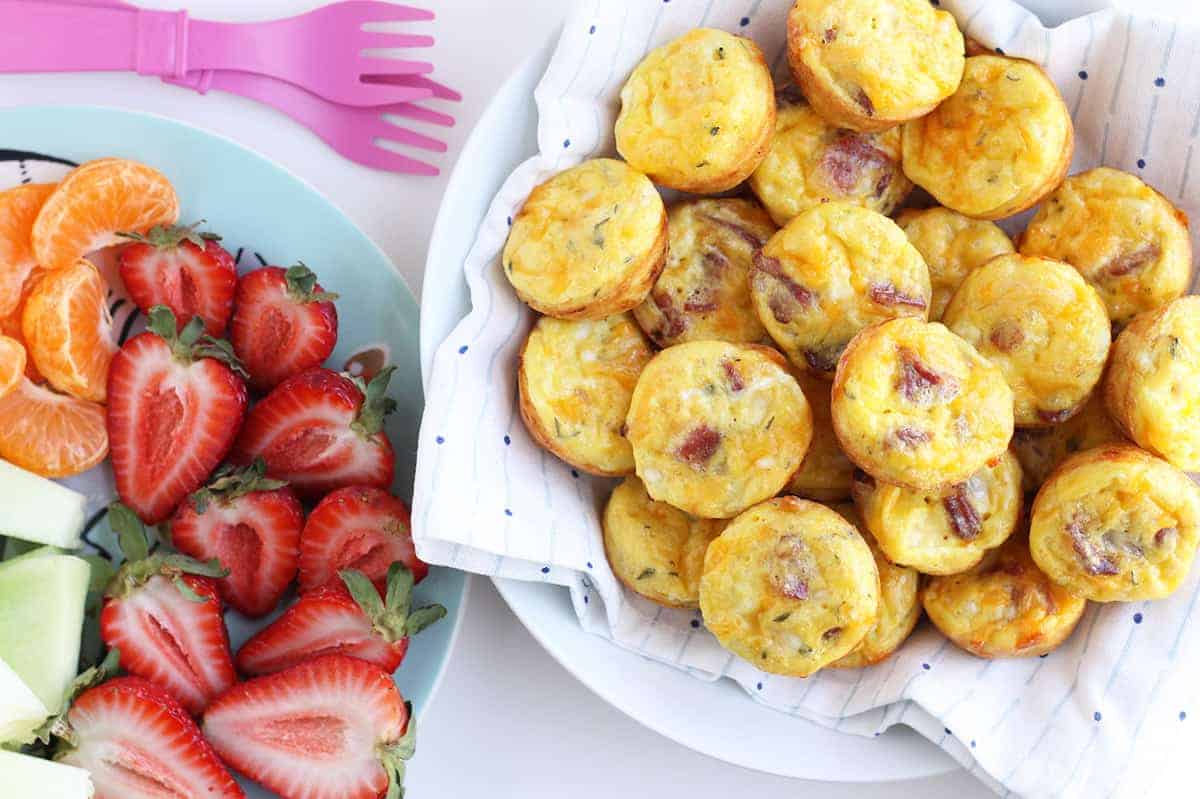
How to Make Egg Muffins
Soft, versatile, and easy to make ahead, egg muffins are a wonderful way to serve eggs. You simply stir the batter together and bake up little muffins in a muffin tin. Here are a few recipe options:




How to Make the Best Fried Eggs
Fried eggs are traditionally made on the stove top and they are super fast and delish. The kids may surprise you with how much they like them cooked this way. You can cook a few at once if you use a large pan, which is nice for making family meals. I prefer to cook fried eggs in a nonstick skillet, though as long as you use enough butter or oil and wait until the fat is hot to add the egg, it should work fine in stainless steel or cast iron.
Here are my favorite methods for making fried eggs:
TIP: You can also bake eggs over tomato sauce for a dish called Shakshuska. The kids may or may not be ready for it, but it’s a delish, quick dinner option.
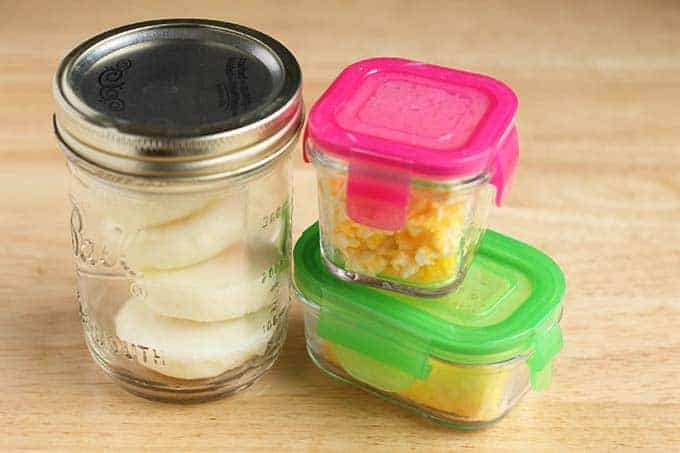
What should I serve eggs with?
So many things! Simple sides would be fruit and toast, though we love them with grain bowls, as taco filling, and in sandwiches. Aim to round them out with other food groups, so include a complex carbohydrate like bread or grains and produce like fruit or veggies if serving eggs for a main meal. (You can totally do them straight up as a snack!)
How to Store Cooked Eggs
To store cooked eggs for future meals, all you really need are airtight containers. I love using half-pint and pint-size mason jars and also this set of little glass cubes. For scrambled eggs, omelets, and egg muffins, simply let them cool slightly and store in a container for up to 3 days.
For hard-cooked eggs, let them cool fully and store them for up to 5 days in an airtight container. You can also line a container with a paper towel to absorb any extra moisture that may come off of hard-cooked eggs.
Related Recipes
I’d love to hear how you like to make eggs for your kids, so please chime in below in the comments!
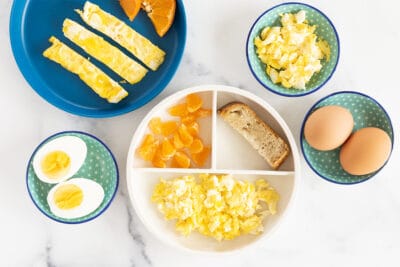
How to Cook Eggs (10 Kid-Friendly Ways)
Ingredients
- 1-4 eggs
- butter or olive oil (optional)
Instructions
Hard-Cooked on the Stove Top:
- Add whole eggs to a large pot. Cover by 2 inches of water and bring to a boil over high heat. Turn off heat and cover. Let sit for 12 minutes. Remove cover and transfer eggs to a bowl of ice water. Let sit until cooled or about 10-15 minutes. Peel and serve as desired.
Hard-Cooked in a Steamer:
- Add 1 inch of water to a large pot. Place the steamer insert inside, cover, and bring to a boil over high heat. Add desired amount of eggs to steamer basket without crowding them too much and cover. Cook for 12 minutes for hard-boiled. Remove cover and transfer eggs to a bowl of ice water. Let sit until cooled or about 10-15 minutes. Peel and serve as desired.
- You can also soft-cook eggs in a steamer by following the same instructions but only cooking the eggs for 6 minutes and skipping the ice bath to serve them hot.
Hard-Cooked in the Instant Pot:
- Add eggs to a silicone egg rack (standing upright) or on top of the wire insert inside of the Instant Pot. Add 1 cup water and cover. Pressure-cook on LOW for 7 minutes. At the end of the 7 minutes, manually release the pressure. Transfer eggs to a bowl of ice water. Let sit until cooled or about 10-15 minutes. Peel and serve as desired.
Hard-Cooked in the Oven:
- Add eggs to a standard muffin pan, placing one raw egg (in the shell) into one cup. Bake at 325 degrees F for 30 minutes. Remove from oven. Transfer eggs to a bowl of ice water. Let sit until cooled or about 10-15 minutes. Peel and serve as desired.
Scrambled on the Stove Top:
- Warm a nonstick or cast-iron skillet over medium heat. Add about 2 teaspoons butter or oil per egg. When melted, spread around the pan with a spatula. Crack the eggs into the pan and stir regularly but gently with a spatula until cooked through. Add shredded cheese and sprinkle with salt, if desired, to serve.
Scrambled in the Microwave:
- Break an egg into a heat-safe bowl. Beat with a fork. Heat in 15-second increments, stirring with the fork between, until cooked through. Cut up (or use kitchen shears) to chop the egg into tiny pieces. Let cool before serving as a finger food to baby.
Omelet on the Stove Top:
- Warm a nonstick or cast-iron skillet over medium heat. Add about 2 teaspoons butter or oil per egg. When melted, spread around the pan with a spatula. Pour in 1-2 beaten eggs. Let set, occasionally moving the egg a little so the raw egg can move underneath, about 2-3 minutes. Flip half of the egg over and allow to cook for an additional 2-3 minutes or until the egg is completely cooked. You can add fillings like cheese or veggies if desired.
Fried on the Stove Top:
- Warm a nonstick or cast-iron skillet over medium heat. Add about 2 teaspoons butter or oil per egg. When melted, spread around the pan with a spatula. Crack an egg into the pan and let cook for 3-4 minutes or until the egg white is mostly set. Carefully flip over and cook for an additional 2-4 minutes depending on how cooked you want the yolk.
Fried in the Oven:
- Preheat the oven to 425 degrees F and coat an 11×17-inch sheet pan with nonstick spray or butter. Carefully crack 10-12 eggs into the sheet pan and season with salt and pepper. Cook eggs for 5-6 minutes or to desired yolk doneness. (This is great for a crowd.)
Notes
Nutrition
This post was first published April 2019.
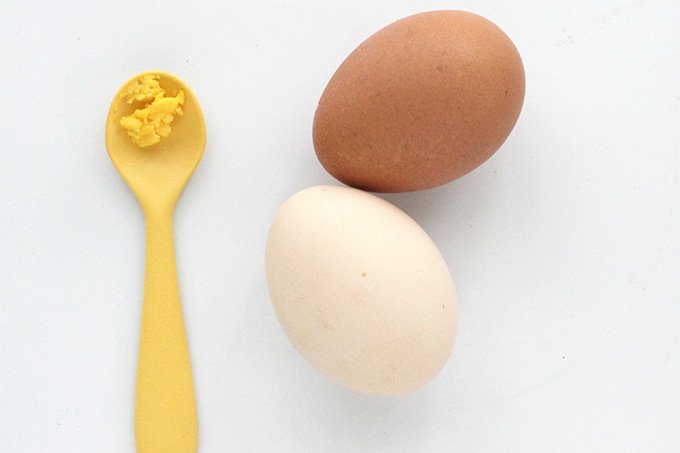
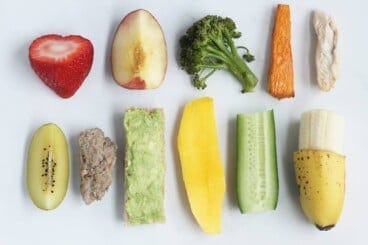






















If you haven’t done breakfast tacos, I highly recommend. I add butter, chopped zucchini, bell pepper and frozen corn and cook medium heat until the zucchini is *almost* cooked. Add scrambled eggs and finish cooking. When the eggs are just cooked, add cheese, turn off stove and let the cheese melt/eggs cool to edible level. I serve on the plate not assembled and my 2 year old LOVES to put a little bit of sour cream on the tortilla, then eggs and have me roll it up. Sometimes served with sweet potato home frieds, sometimes it’s just a standalone since there’s veggies in it. Just thought I’d share!
Hey Amy! Thanks for this. My 18 month old loves all eggs all the time. I’m just wondering – can she be served medium boiled eggs? Her dad is into runnier yolks and she wants what we have. Thanks in advance and thanks also for all your tips – your page is a huge resource for us!
Hi! The official advice from the CDC is to wait to do runny eggs until age 5 due to an increased risk of serious illness in the case of salmonella. That said, we do them for our 2 year old because we’ve decided that the risk is still quite small. More info here: https://www.yummytoddlerfood.com/when-can-kids-eat/#When_can_kids_eat_runny_eggs_5_yr
Thank You, realy Helpful